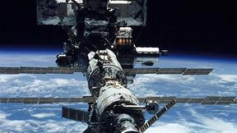Following a heated debate sparked by the presentation of an "alien body" at a Mexican congressional hearing, NASA's independent panel released its research report on "Unidentified Anomalous Phenomena" (UAP) - commonly known as UFOs - on September 14.
The report, after analyzing UFO sightings over the past year, concluded that there's no evidence to suggest that the observed UAPs originate from extraterrestrial beings. However, due to a lack of continuous detailed observations, there's insufficient data to draw definitive conclusions about UAPs.
Contrary to public expectations, the 33-page report did not list a variety of UFO sightings. Instead, it primarily used a Q&A format to explain the independent group's data analysis methods, research challenges, and future data collection and analysis directions. The report emphasized the future role of AI and machine learning as essential tools for monitoring UFO events.
NASA Administrator Bill Nelson stated that the independent research group aims to shift public curiosity about UAPs towards a focus on science.
NASA's UAP independent research group, established in June of the previous year, consists of 16 members, including scientists, astronauts, aviation system officials, and science journalists.
The group's formation was influenced by a significant increase in UFO sightings in the U.S. in recent years. This uptick is politically linked: the U.S. Department of Defense encourages military personnel to report UFO sightings to study potential security risks they pose and to determine if they might be intelligence-gathering devices from adversary nations.
Between March 2021 and August 2022, the Department of Defense received 247 UFO sighting reports. In contrast, only 263 reports were received in the 17 years prior to March 2021.
However, the independent research group found no evidence linking UFO sightings to extraterrestrial objects. For instance, an unidentified object captured by a U.S. Navy pilot from the USS Roosevelt was initially reported to have flown over the ocean at astonishing speeds. After analyzing various data points, including camera angles, wind speed, and aircraft altitude, the group determined that the object's perceived speed was partly due to the parallax effect.
The group also noted that the object's color in the video was lighter than the seawater, suggesting its temperature might be lower than the ocean's, indicating it might not have a propulsion system and could be drifting in the wind.
Regarding UFO monitoring, the report mentioned potential tools like NASA satellites, radars, telescopes, and eyewitness reports. For instance, while Earth observation satellites might not detect small UFO-like objects, they can observe environmental conditions that might change when a UFO appears.
The group believes the biggest challenge in studying UFOs is the lack of metadata and low data quality. The absence of continuous monitoring data and devices not designed for scientific research contribute to this issue. Military surveillance equipment and intelligence satellites provide more accurate data, but such data is classified, making it inaccessible to regular research teams.
Despite numerous UFO sighting reports, the lack of continuous, detailed, and meticulously planned observations means the group currently lacks sufficient data to draw definitive scientific conclusions about UAPs.
For future data collection, the group calls for participation from commercial companies and the public. They also propose collecting UFO footage from the public in real-time through an open-source mobile app.
The report emphasizes that AI and machine learning will be essential tools for investigating UFO events. These tools can quickly analyze information from satellites and radar systems. However, the effectiveness of AI and machine learning depends on the quality of the training data. Thus, high-quality data remains the most significant gap in UFO research.
While the group found no evidence linking UFO sightings to extraterrestrial beings, they acknowledge the possibility of extraterrestrial beings traveling through our solar system to Earth.
At a press conference on Thursday, NASA Administrator Nelson expressed similar views. While Nelson believes in the existence of other life forms in the universe, he thinks the likelihood of extraterrestrial beings visiting Earth is low.
In July of that year, a former U.S. Air Force intelligence officer claimed at a congressional hearing that the U.S. government had secretly collected "non-human" pilot bodies and had gathered crashed UFOs, attempting to reactivate them.
Nelson firmly denied NASA's attempts to cover up evidence of aliens. He pointed out that the former intelligence officer's claims were based on hearsay without any substantial evidence. "He said he had a friend who knew of a warehouse storing a UFO, and another friend told him about alien bodies."
Regarding the "alien body" presented at the Mexican congressional hearing, NASA scientist David Spergel had a similar response to Nelson's. Spergel urged Mexico to provide samples of the body to the global scientific community, saying, "Then we'll know what it is."




